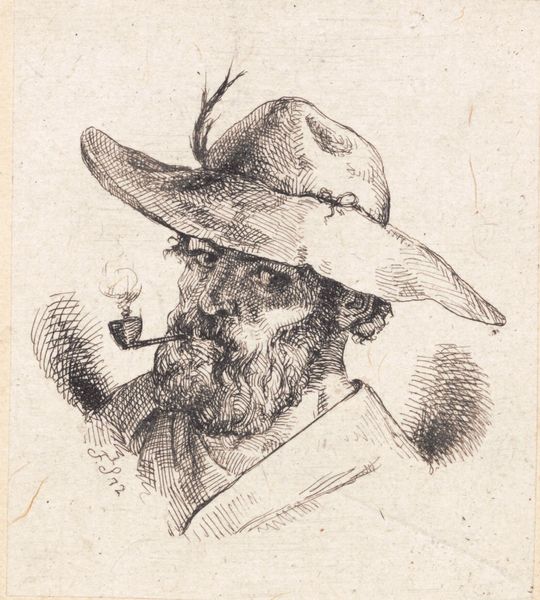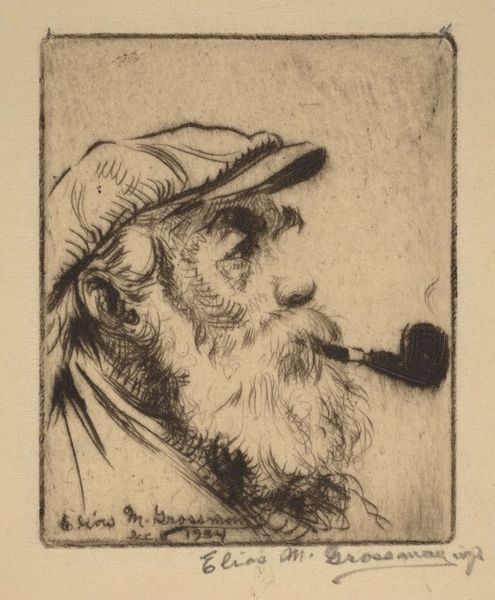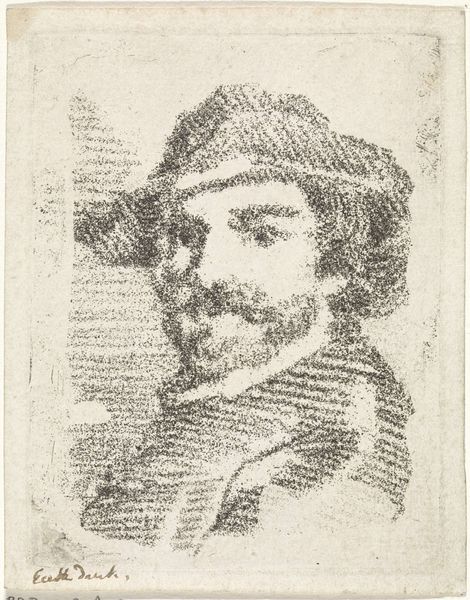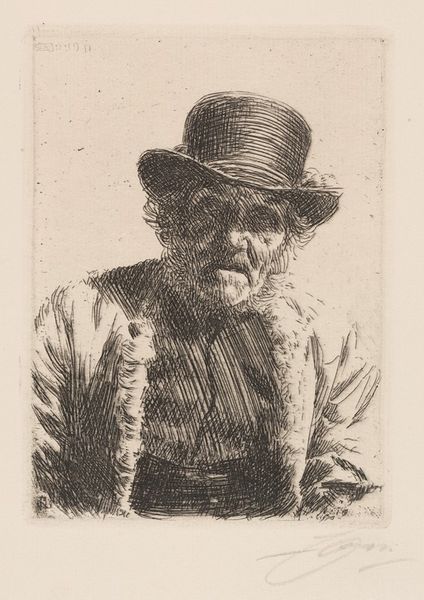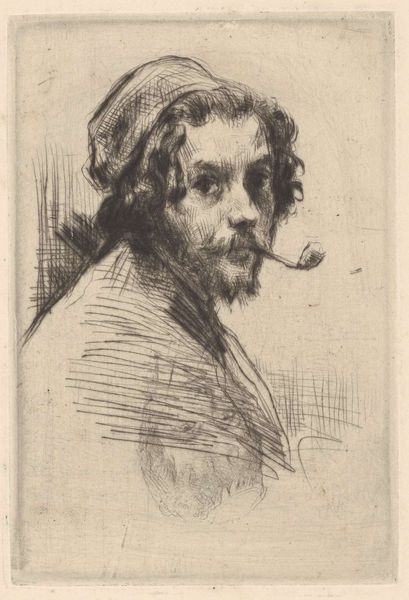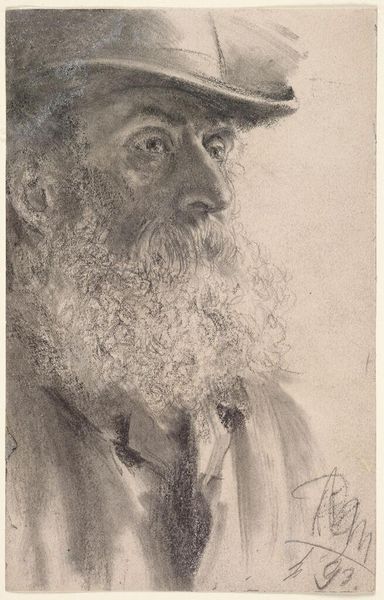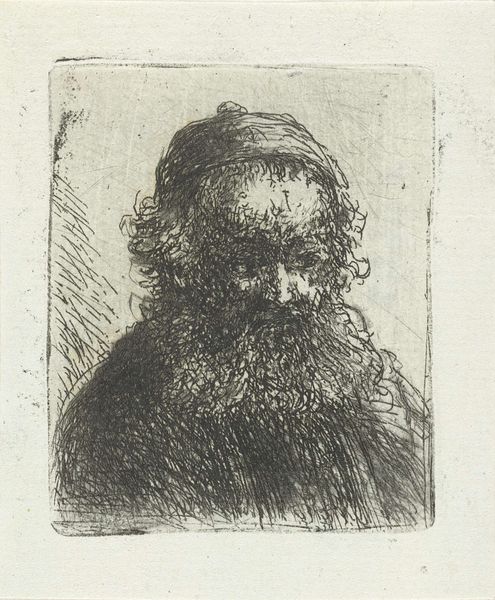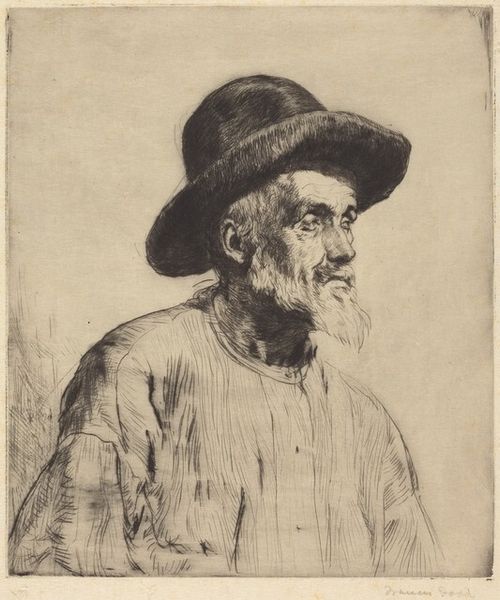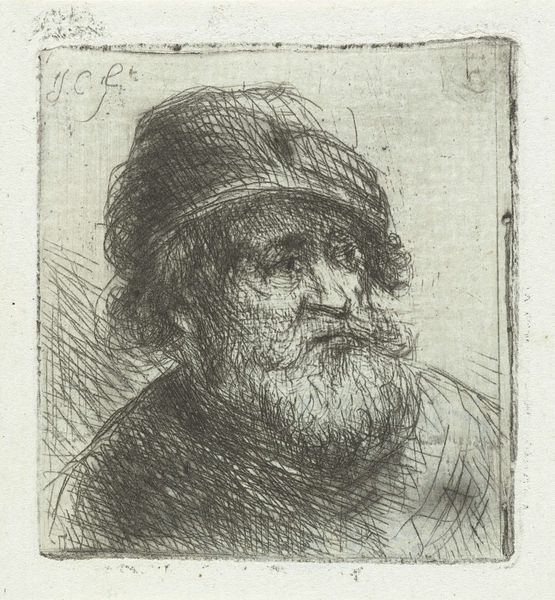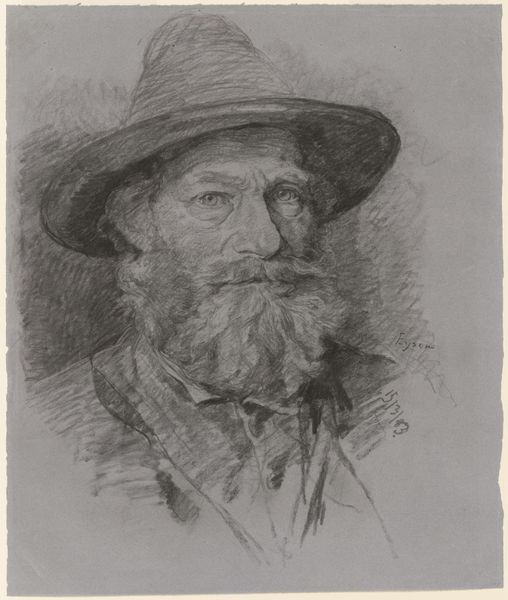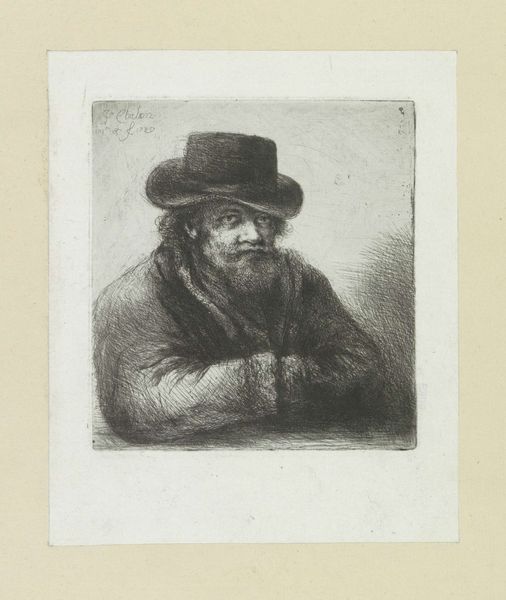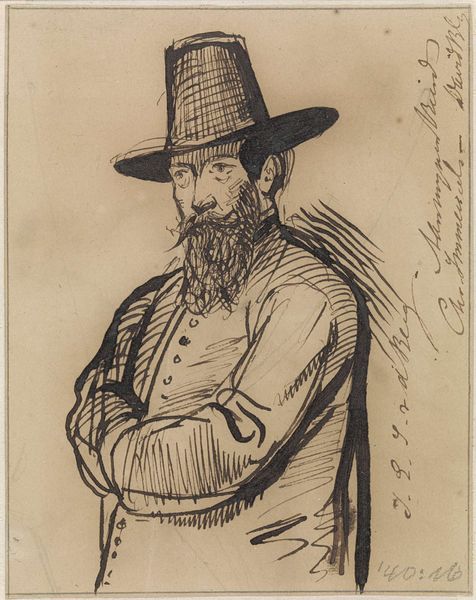
Copyright: National Gallery of Art: CC0 1.0
Curator: Welcome. Today, we're examining "Portrait of the Artist," possibly from 1919, a compelling self-portrait by Augustus John rendered as an etching in graphite. Editor: My first impression is a sort of…quiet intensity. There's a somber mood, even a slight defiance, conveyed through the artist's gaze. It's a visually interesting, relatively small work, though dense. Curator: Indeed. Note the close attention to the texture of his beard and hair achieved through intricate, almost frantic, line work. This meticulous craftsmanship contributes to the overall feeling of immediacy and introspective analysis of form. Editor: That intricacy, though, also speaks to something else. Consider John’s position as a somewhat controversial figure. Did he see this self-portrait as a means to reclaim his narrative? Was it a way to express solidarity with marginalized identities or explore the politics inherent in representation itself? Curator: An interesting hypothesis. However, if we consider his broader oeuvre, John seemed consistently preoccupied with formal concerns such as the interplay of light and shadow and the construction of the pictorial space, visible through his calculated arrangements. See how the hatchings define not only texture but also volume? Editor: Perhaps, but that doesn’t negate the possibility of a deeper engagement. Self-portraits are never neutral acts. Looking into the politics of representation might uncover complexities beyond mere surface aesthetics. The fact he chooses to depict himself, here, becomes a powerful assertion. Curator: It's certainly food for thought. Regardless, the print achieves a remarkable presence, showcasing John’s technical virtuosity within the framework of a relatively constrained medium. Editor: And invites us, regardless of perspective, to think about the interplay between artist, identity, and the broader socio-political landscape they inhabit. A great way to end the talk. Curator: An excellent addendum! Thank you for sharing your interpretation with me.
Comments
No comments
Be the first to comment and join the conversation on the ultimate creative platform.
